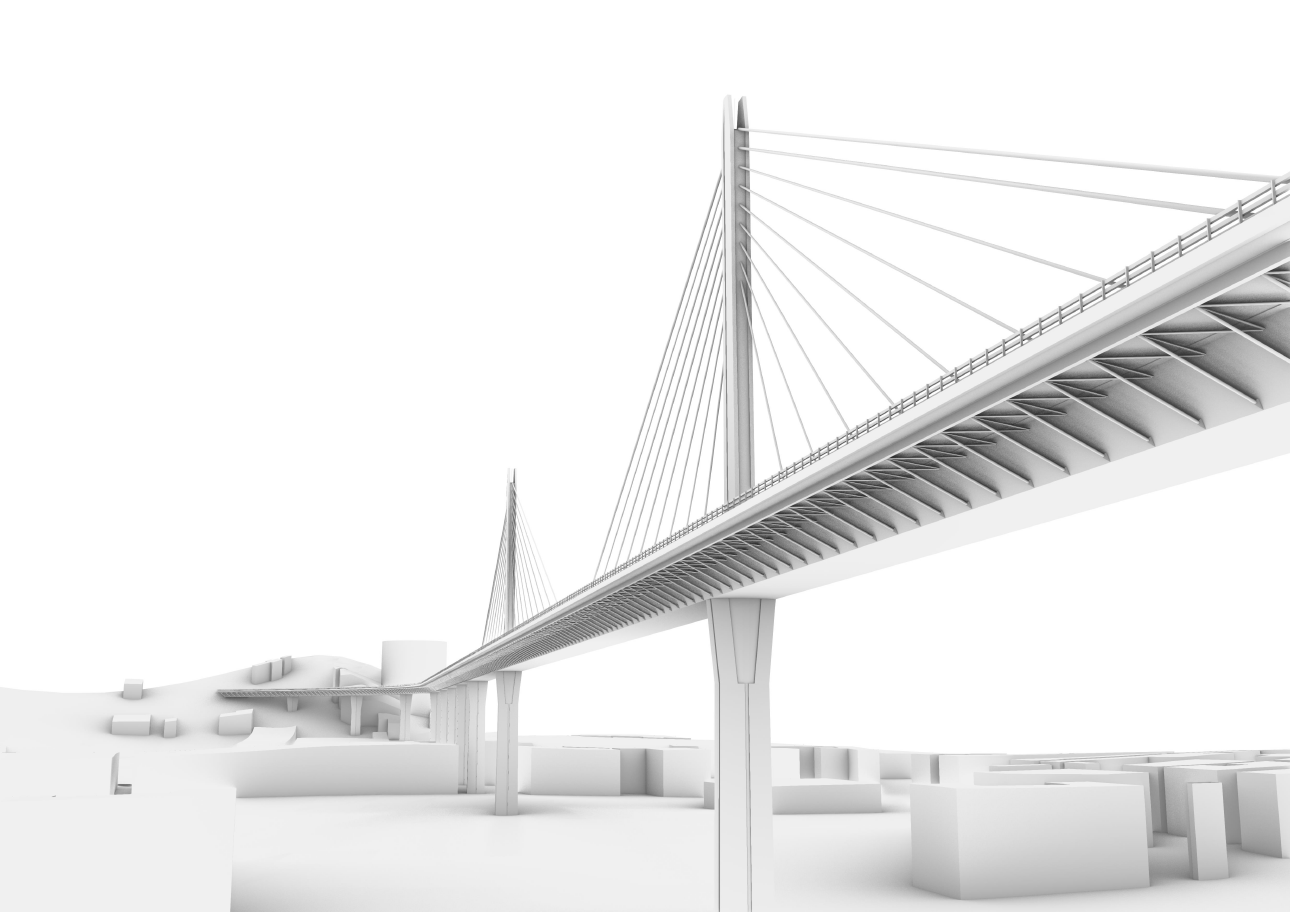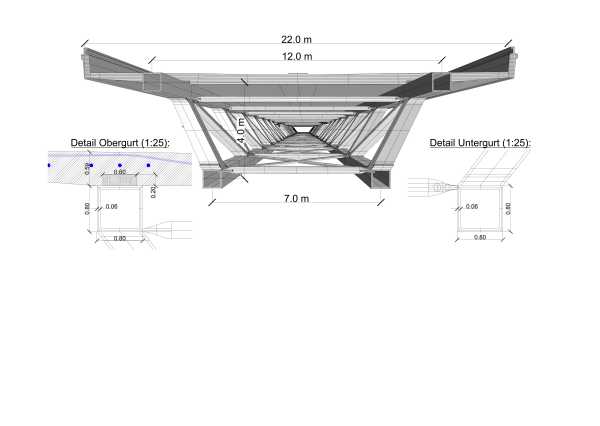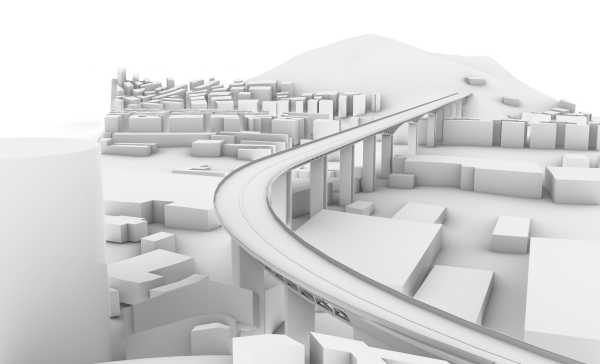Structural design of the Polcevera-Viaduct
Authors: Rafael Egli, Daniel Perrin
Language: German
Abstract
On 14 August 2018, the most western of the three pylons of the Polcevera viaduct in Genoa collapsed together with a 250 m long bridge section. 43 people lost their lives. Since then, this important east-west axis in the Italian road network has been interrupted and Genoa is in a state of emergency (in terms of traffic). As part of this Master's thesis, a replacement of the former Morandi Bridge will be designed, dimensioned and documented.
In addition to the technical boundary conditions, the historical and cultural background of the port city of Genoa, the inner-city embedding of such a large infrastructure project as well as the economic importance of this transport connection are taken into account. The limited space also requires a well-organized concept for the construction process. As a result of the far-reaching negative consequences caused by the lack of such an important mode of transport, the construction of the replacement bridge, as quickly as possible, is a priority.
Design by Rafael Egli:
The composite truss bridge has a total length of 1100 m that is divided into 16 sections, with two main span widths of 120 m each and 14 edge sections with span widths between 32 and 64 m. The middle bridge section is connected monolithically to the twin piers. The composite cross-section of the bridge superstructure consists of pre-produced reinforced concrete roadway slab segments and a spatial steel truss underneath, which is variable in height in some areas.
The construction of the bridge is carried out using two different construction methods. The main span widths are constructed with the balanced cantilever method from the central three twin piers. In the edge spans, individual truss segments are assembled on the ground to form a truss with a span of 56 m, which is then lifted to bridge level using hydraulic lifting technology and welded to the twin piers.
With the chosen bridge variant, an elegant, but not too pompous, structural solution could be found. The aim was to design an aesthetically pleasing supporting structure without creating a structure that would impose itself too strongly and occupy the entire valley.
Design by Daniel Perrin:
The planned bridge consists of a foreland bridge and a cable-stayed bridge. The cable-stayed bridge has two pylons that carry the main span of 275 metres, the cables being arranged in one plane. In the western, industrially shaped valley area, the supporting structure is designed as a beam bridge with regular span widths of 67.5 metres. A composite box cross section runs along the entire length of the bridge. It consists of a steel hollow with cantilevered tube struts supporting the deck cantilevers made of reinforced concrete. The deck slab is manufactured from stay-in-place prefabricated concrete slabs, which is covered with a continuous layer of concrete. A solution with parallel stranded cables is chosen for the stay cables, which are protected against corrosion by a sheath tube, a stranded sheath and galvanisation. The bridge is founded with drilled pile foundations on the rock horizon running a maximum of 40 metres below the surface. The bridge girder is pre-assembled in elements of 13.5 to 22 metres and placed with a crawler crane and the deck is concreted on site. The bridge leaves free space in the area of the wasteland, where future developments (residential area, park, parking lots) are to be expected.



